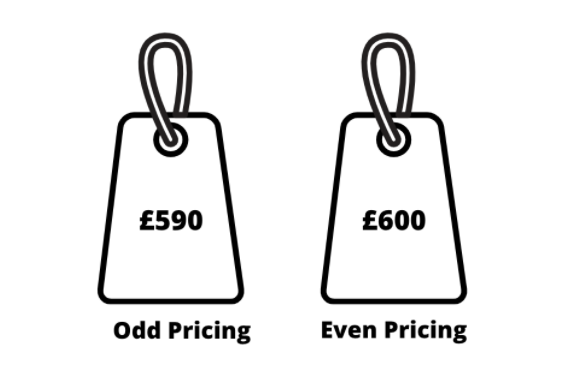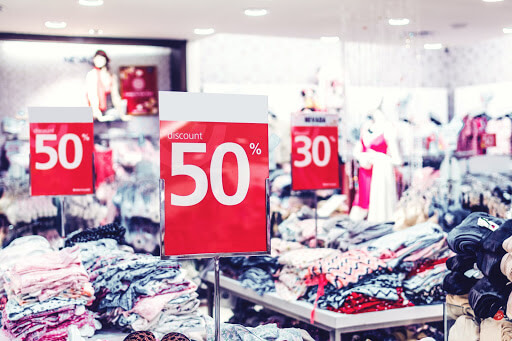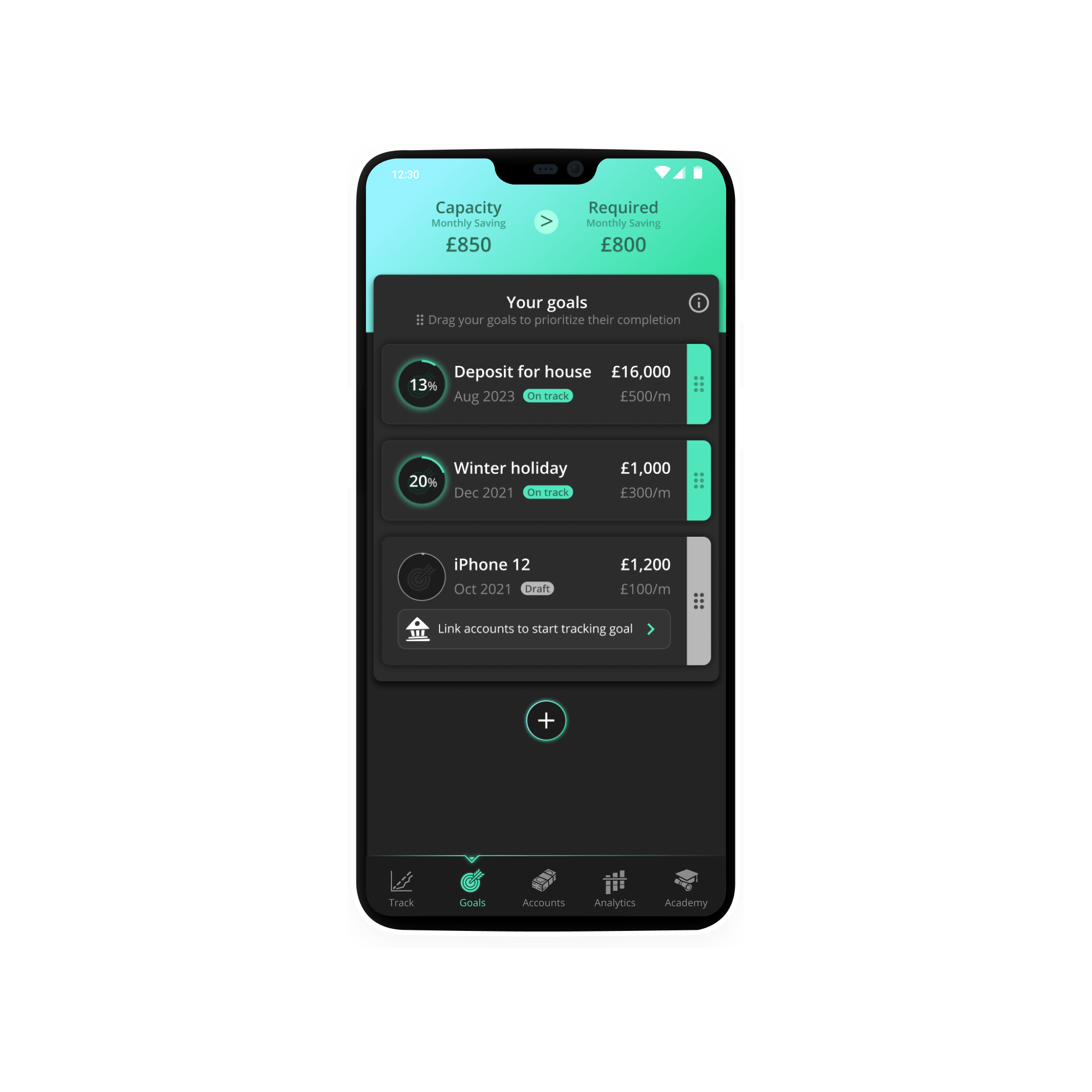Psychological Pricing: Tactics and Examples Making You Spend More
Photo by Benedikt Geyer on Unsplash
This is Part 12 of the series Money on Your Mind, a blog series created to expand financial education by telling you exactly what you need to know about your brain and your spending habits.
Psychological pricing is a very important phenomenon which we most likely experience daily without noticing. Understand the tricks companies use to encourage spending.
You might think that humans are smarter than fish, and in many ways we definitely are. However, when it comes to our spending habits, we often fall for bait - hook, line, and sinker! Here are 6 ways that psychological pricing gets you to spend more money.
Whether you are buying groceries, clothes, or electronics, the prices of your items likely end in 99. This pricing practice can make you more likely to purchase that item in four distinct ways.
1. Price Tags: Odd-even Pricing

Photo by Henry & Co. on Unsplash
There are two main types of prices: odd and even. Odd prices are prices that are just below some comparative pricing threshold, such as $0.99, $48, $590. On the other hand, even prices are exactly on the threshold. Using the odd price examples, the matching even prices are $1.00, $50, $600. When people see odd prices, they assume that they are paying for the item at a lower pricing threshold. For example, if you are looking to buy a new laptop less than $1000 and the laptop you are looking at is priced at $999.99, you are more likely to purchase that laptop because your brain will process the laptop in the $900 threshold rather than the $1000 threshold, despite the fact it is only $0.01 under your budget.
2. Money “Back”
When you buy items at odd prices, you are more likely to get change back from the cashier. The psychological pricing strategy gives you the sensation of receiving money when you make your purchase can feel rewarding, despite the fact that you just purchased an item. Even when you are not using cash, the fact that you are paying less than the threshold amount can make you feel that you saved the difference. For instance, you may feel like you are saving $20 if you buy a printer for $480 because you will compare the price to the threshold price of $500, even if there are no additional sales on the printer.
3. Level Effects and Anchoring

Photo by Franki Chamaki | @franki on Unsplash
The tendency of consumers to focus on the left-most digits of a price is called left-digit anchoring, which is part of a larger trend called level effects. Level effects detail that consumers choose to ignore the last digits of a price, rather than interpreting them to correctly round their pricing. When processing prices, the left-most digit matters the most because it determines the order of magnitude of the price. This means the left-most digit will show whether the item is in the ones, tens, or hundreds place and so on. Certainly, this is the most important digit and the following digits will be less substantial in terms of the impact that the purchase will have on your wallet. While recalling prices, people tend to only remember the left-most digit due to its importance, rather than the entire amount. Marketers exploit this habit and often sell items at a price that would normally round up to the next pricing threshold while allowing consumers to perceive the price at the lower pricing threshold. Prices of $6.05 and $6.80 will likely both be associated with $6.00, when correct rounding to the nearest dollar would have yielded $6.00 and $7.00 respectively.
4. The power od 99: Image Pricing
Alternatively, seeing many prices labeled with odd prices, especially those ending in 99, can often indicate a markdown for a sale. Large banners or ads like “All Jeans $19.99 NOW” often utilize odd prices to emphasize a sale. These ads are often eye-catching and promote a reduced price, possibly creating an association between odd prices and sales. In these situations, the ending of odd prices in ads are not ignored, but tend to be interpreted as an image associated with savings, rather than a number. This means that the true price isn’t being digested instantly, but rather the presence of odd pricing signals that there is a good deal.
5. Patterns: Making numbers easy to remember
Patterns in prices often can catch the attention of customers, especially when numbers consecutively increase, decrease, or say the same. Studies show that prices with identical digits, such as $111, are the most likely to be remembered in full. When prices are consecutively decreasing, the left anchoring bias is accentuated, as it encourages the brain that the next few digits are even less important since they are lower than the left-most digit.
6. Relative Savings

Photo by Artem Beliaikin on Unsplash
Consumers are more likely to compare explicit value savings to the relative price of a product. In other words, shoppers would rather save $25 on a $50 product than a $100 product since the savings percentages are 50% and 25% respectively. Regardless, the consumers are still technically saving $25 in both scenarios. Marketers use this tendency by using percentages of saving for higher-priced items and explicit discount amounts for lower-priced products. For example, you are more likely to see 10% off a $2000 refrigerator, rather than $200 off a $2000 refrigerator. Lower-priced items like t-shirts will often be marketed as $10 off $30 shirts, rather than 33% off $30 shirts.
That’s why we created Nova, to help millennials stay on track, prioritise their financial goals and adopt the right financial habits in the era of digital marketing.

Nova will put together a visual timeline to show you how you can achieve your goals. Nova provides real-time feedback on your spending patterns to improve your financial habits. Can’t save as much for the month? No worries! Nova will suggest adjusting your date of completion if you fail to reach your required saving for the month. The app allows you to prioritise your goals to see which order of completion you would like them to be in.
Whatever the goal, Nova’s got you covered.
Next time you’re shopping, you might notice these 6 tricks of psychological pricing in practice. Taking the time to think about the true price, rather than taking shortcuts to round down can help you make realistic purchasing decisions.
So what are you waiting for? Download Nova now to get started on your journey to financial wellness!






